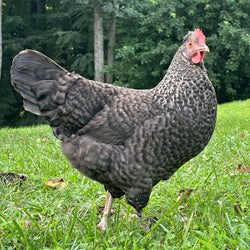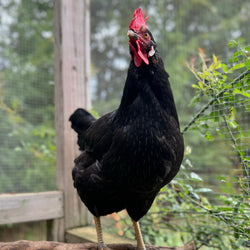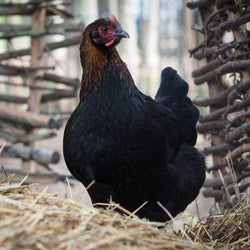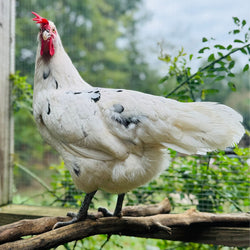page=3/--
Frequently Asked Questions
Here we answer the most commonly-asked questions about ordering, chicken care, and more.
All about Splay Leg, a.k.a. Spraddle Leg
Spraddle leg, also called "splay leg," can be caused or exacerbated by brooding on a slick surface such as newspaper. (We recommend these types of bedding, instead.) It's as if the chick is trying to stand upright wearing roller skates: her feet keep sliding out from beneath her. Alternately, some cases are caused by the bird being poorly positioned in the egg, or by various vitamin deficiencies. Signs of Splay Leg In serious cases, the chick is (or gosling or duckling) is unable to stand up; legs point to either side of the body rather than beneath the body to...
Read MoreWhat is a pasty vent, and how do I treat it?
A pasty vent, or "pasting up," "pasty butt," or "vent gleet," is a stress-induced condition in which droppings dry and cake up around the vent of young baby chicks. It is most dangerous when it completely blocks their vent opening, because the chick will be unable pass any more droppings. A baby chick will typically die within 2 days of onset of a blocked vent, so it's important that you remedy this problem quickly. Diagnosis A pasty vent is easy to diagnose. The dried poo will be stuck to the outside of their rear, totally or partially covering their vent:...
Read MoreAll about Omphalitis disease
Imagine a belly-button infection--that's basically Omphalitis. Developing or newly-hatched baby chicks are susceptible to infection of their navels if incubator or brooder conditions are not ideal, or the infection is spread by a well-meaning human. Read on to find out more about this disease and how to prevent it: Omphalitis Also called Navel infection, mushy chick, yolk sac infection Prevalence Common Signs General signs - Lack of appetite, lethargy, huddling near heat source and fluffed up down. Chicks may also die in shell late during incubation. Loose stools may also be a symptom. Cardinal or diagnostic signs - Unhealed, swollen...
Read MoreHow do I introduce my new chicks to other young chicks in the brooder?
Introducing new hens to an established flock can be tricky (see how to do that in the related questions below)---but luckily it's much easier to introduce chicks to chicks than it is adult chickens to adult chickens! This is because the drive to establish a pecking order doesn't start for a few weeks in baby chicks--usually not until they're 6 or more weeks old. Make sure you're getting chicks from an NPIP source like My Pet Chicken. If you're concerned about communicable illness due to either the source of the chicks or environmental factors (such as exposure en route), consider...
Read MoreMy chick's toes are all curled up--what's wrong with her?
Sometimes a chick will develop or hatch with a condition called curled toes or curly toes in one or both feet. Illustration for My Pet Chicken by Ray Yang It's possible that she has injured a foot--sometimes this can occur while she's in the egg as she's trying to position herself correctly for hatching. Sometimes the injury might occur after she's hatched. It can also be that she's suffering from a riboflavin deficiency, either from a deficient diet in the hen that laid her egg, or because she is not consuming enough herself. Another possibility, especially with at-home artificial incubation,...
Read MoreQuarantine in Your Backyard Flock: Why, When, and How to Do It Right
Keeping a happy and healthy backyard flock means paying attention to biosecurity—and one of the most important biosecurity practices is quarantine. While the idea of separating a chicken from the rest of the flock might seem unnecessary or even a little over the top, quarantine can prevent the spread of disease, protect your birds, and save you both heartache and money in the long run. Let’s break down what quarantine is, when you should use it, and why it’s essential for a thriving backyard flock. What Is Quarantine? In simple terms, quarantine means isolating a chicken (or chickens) that has...
Read MoreChick illnesses and issues (overview)
When you're worried your new baby chicks are ill, there are a number of things that could be responsible! Here's a quick overview of the most common illnesses, conditions, and issues that may cause you concern with your new baby chicks. It is not an exhaustive list. Please click on the links for more details about each. Illnesses and conditions common to baby chicks Aspergillosis, or brooder pneumonia - Primary symptoms of this illness are respiratory. Brooder too hot or too cold - If chicks are too hot, they'll be as far from the heat source as possible and may...
Read MoreWhat kind and how much feed should I give my flock at each stage of development?
As baby chicks and waterfowl grow, their nutritional needs change. It can be confusing to know how much and what kind of feed to give them at each stage of development. Please don't lose sleep over this issue! We have all the help you need for your growing chickens, ducks, and geese right here. One note before we get started: All feed manufacturers have recommended stages for their feed. This guide is a commonly accepted standard; however, you should follow the directions on the feed you choose for optimum benefit from that brand. Regardless of their age, one principle always...
Read More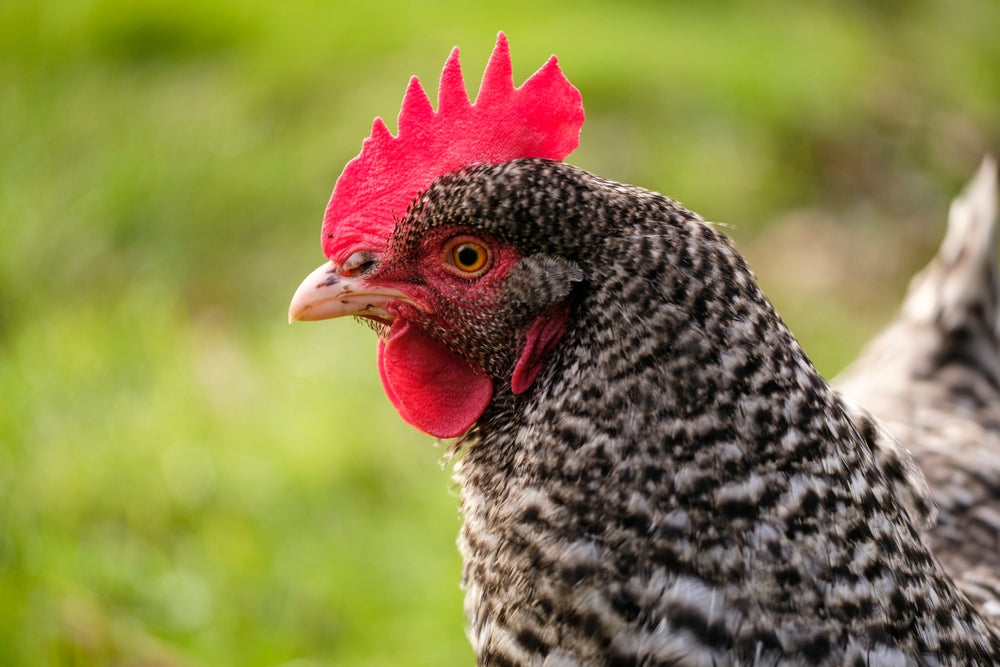
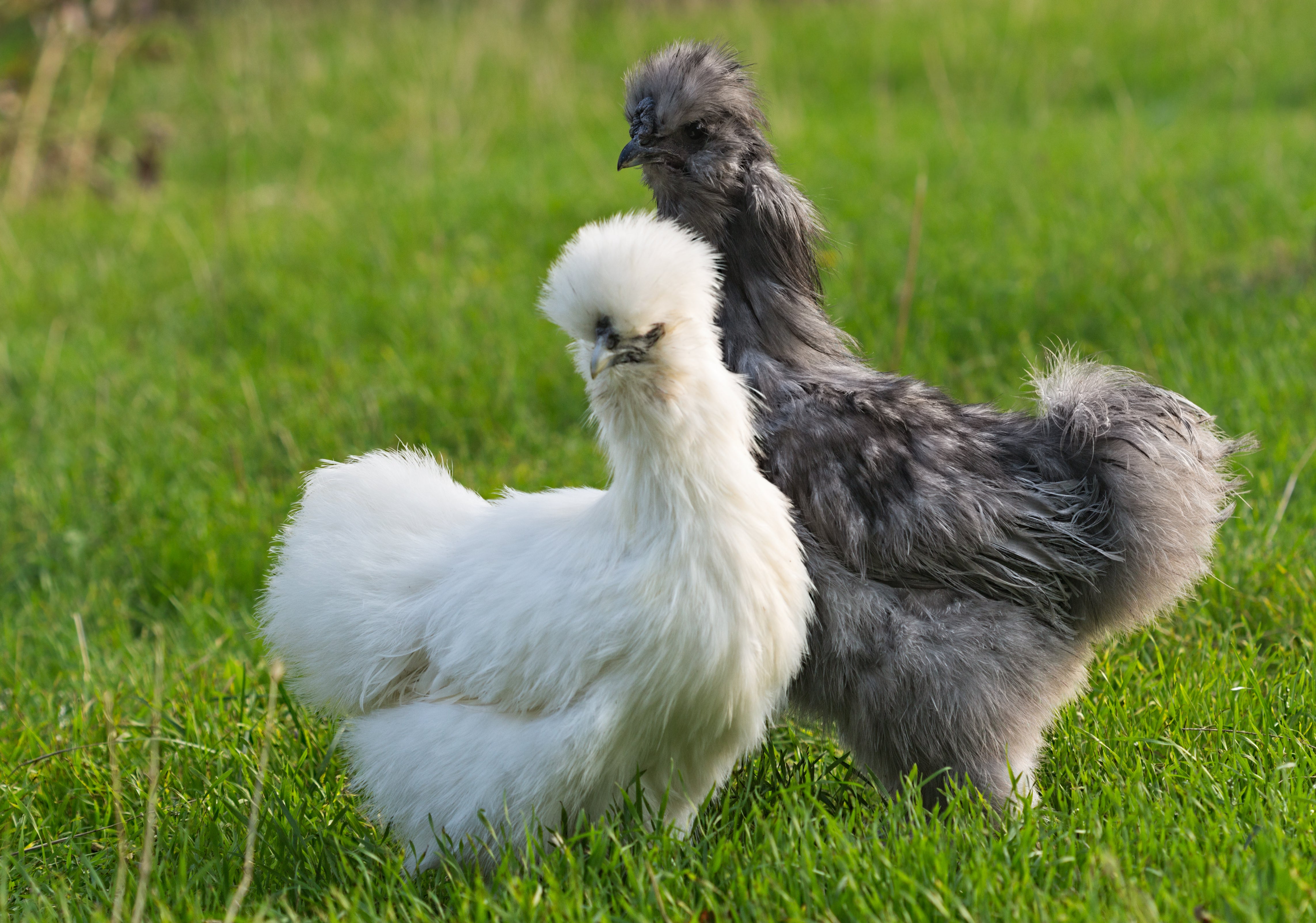
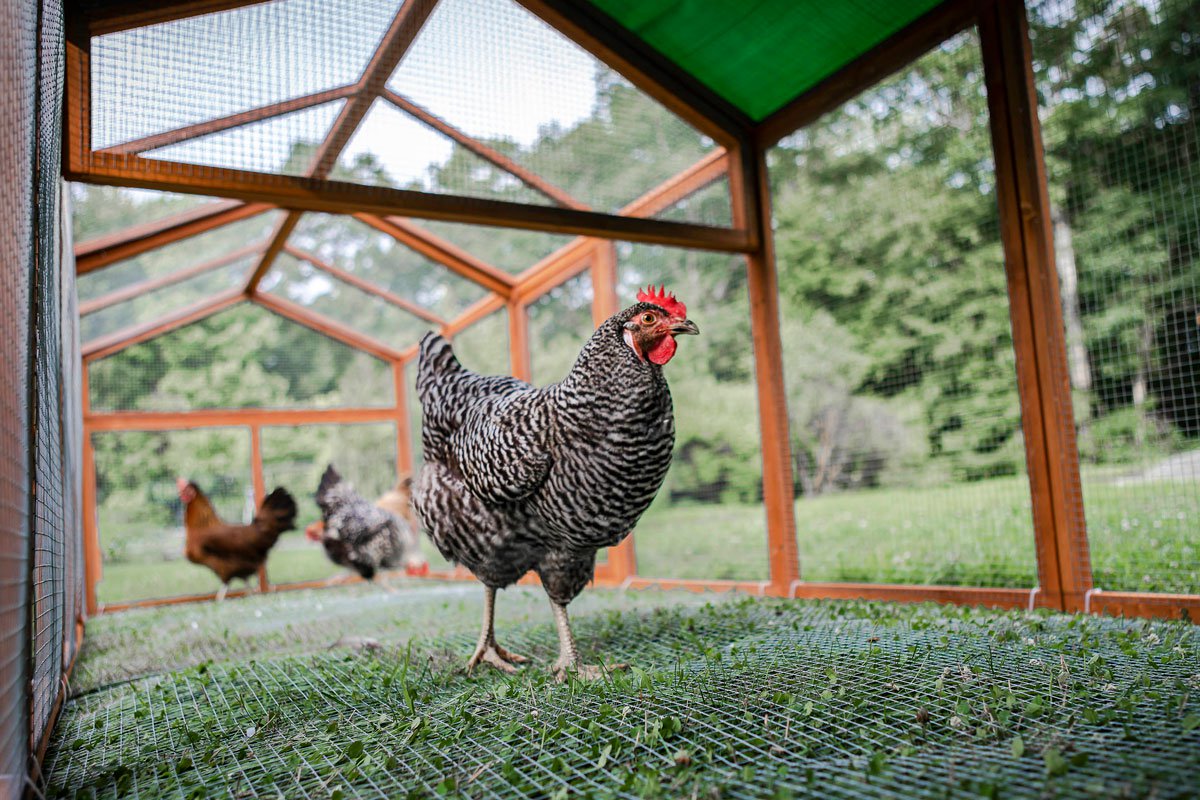
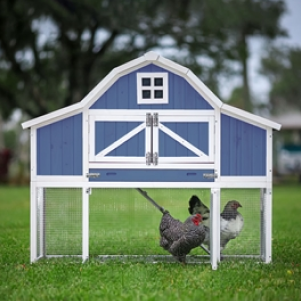
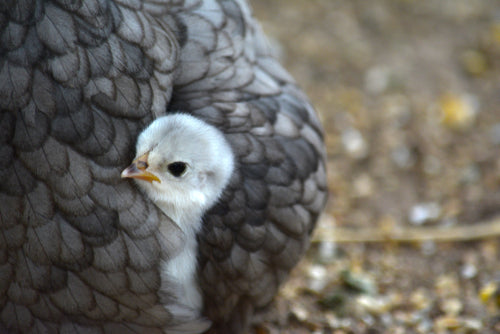
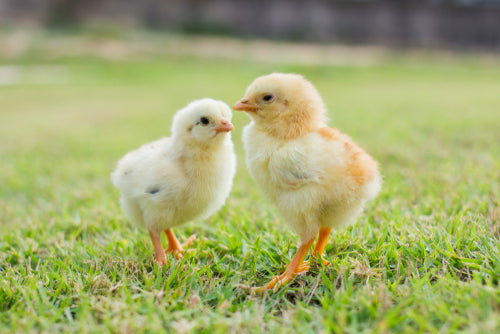
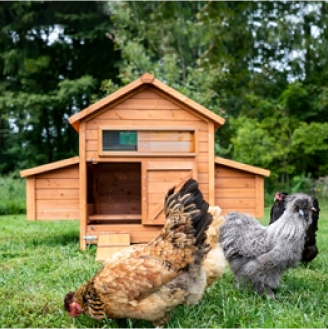

"The Clubhouse" Coop
Easy to assemble and built to last, the Clubhouse Coop is the perfect starter coop for a small flock.

